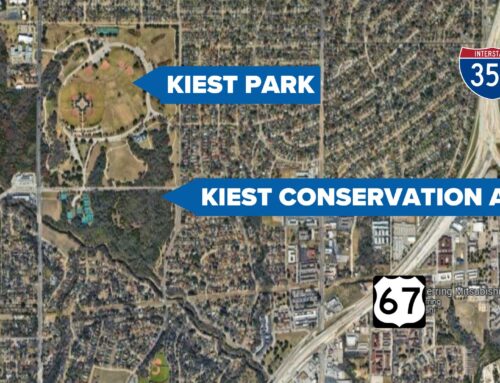Dallas City Council approved the West Oak Cliff Area Plan this week, creating a land-use plan for 5 square miles of our neighborhood, after two-and-a-half years of planning.
What’s next? Zoning cases to codify some of those plans in three neighborhoods it touches: Elmwood, the Hampton/Clarendon corridor and Jimtown.
Elmwood will be first to receive one of these “authorized hearings,” City Council member Chad West says. Neighbors have said they want to improve walkability, set standards for building heights and proximity slope and make alcohol sales easier. The West Oak Cliff Area Plan also suggests new multifamily development, such as small townhome or apartment buildings.
“Increased density, such as new townhomes or apartments, is wanted for Downtown Elmwood, as a way to support small businesses and provide affordable housing, even though neighbors overwhelmingly said they want the central commercial district to maintain its ‘neighborhood feel,'” the Advocate wrote in March.
The Urban Land Institute chose Elmwood as one of its five mTAP projects for 2023-24, meaning some of the best urban planning minds will be working on the neighborhood’s challenges.
And the City of Dallas could raise the money to implement some of these suggestions. Funding to improve the Elmwood commercial district could be requested from the city’s next bond election in 2024, West says.
“These infrastructure enhancements, coupled with Elmwood’s authorized zoning hearing, will bring alive the vision that neighbors and stakeholders have been pushing for,” he says.
West says he will appoint “a small task force of neighbors and downtown Elmwood property owners to work directly with staff to ensure the community engagement results from WOCAP’s 2.5 years of outreach are incorporated into the zoning changes.”
Neighbors repeatedly testified at City Hall that the City of Dallas didn’t do enough to engage neighbors, especially those who don’t speak English. The plan gave root to community groups that mounted resistance to it, successfully removing language suggesting “automotive-related businesses” should be limited and that “missing-middle housing” should be encouraged in certain areas.






